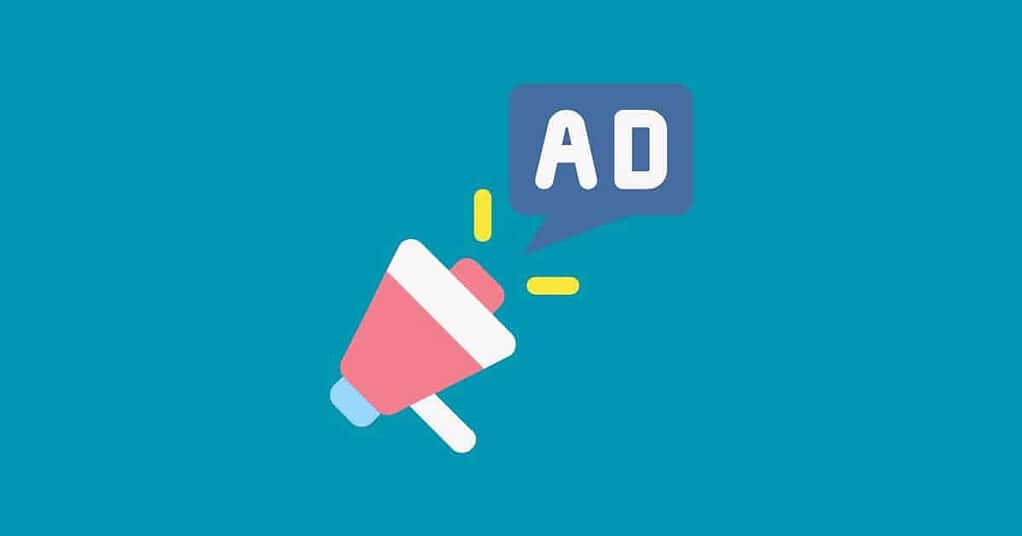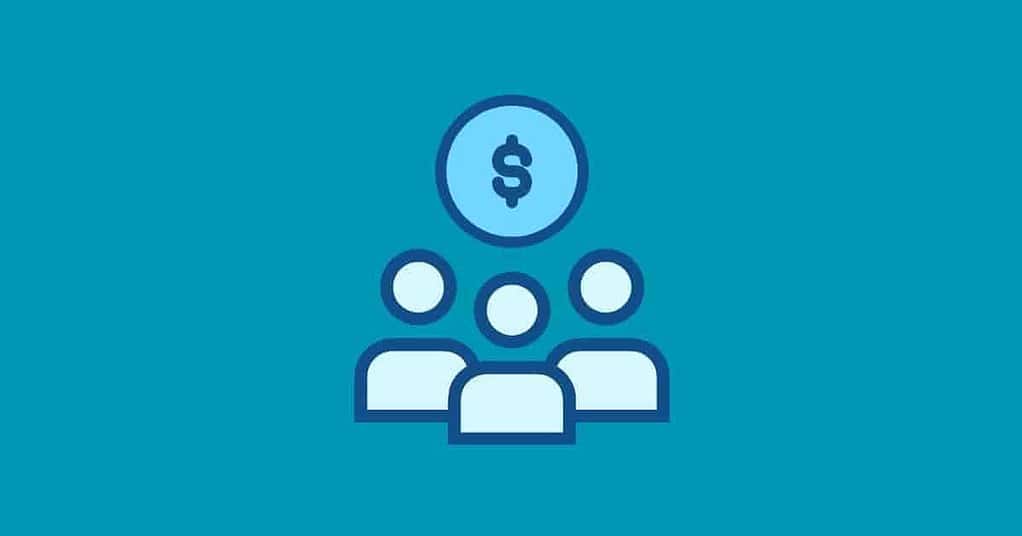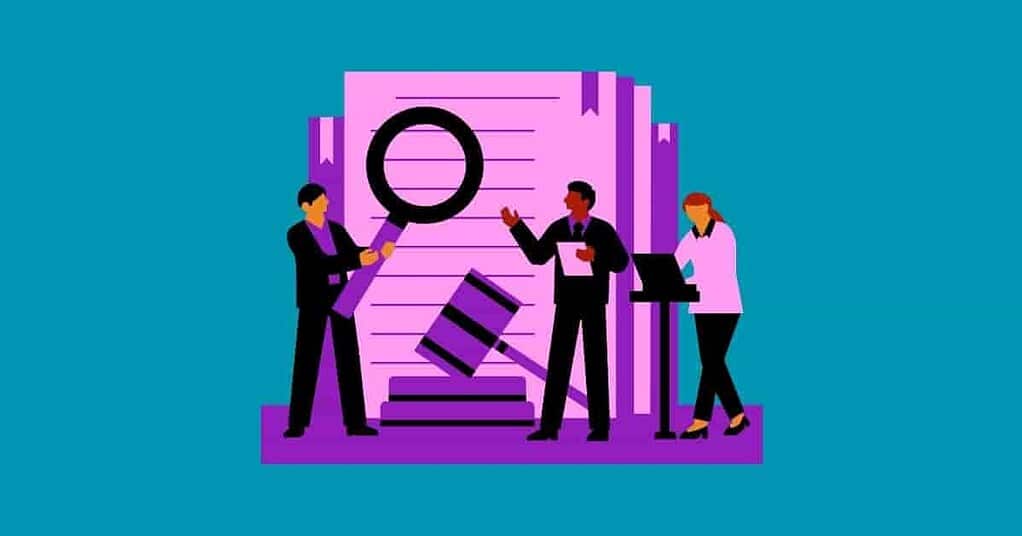Do Bloggers Earn Money? Yes, Here’s How You Can Too! [2024]

According to RankIQ, 72% of bloggers make $2,000+ per month by using ad networks such as Mediavine or Adthrive.
That’s right – blogging isn’t just a hobby, it’s a legitimate way to make serious cash. But let’s be real: not every blogger is cruising around in a Ferrari.
So, do bloggers earn money? Now you know the answer. Can you make money blogging? Yes, you can too.
But it’s not about slapping together a few posts and watching the dollars roll in. It’s about strategy, persistence, and knowing the ins and outs of monetization.
I’ve been in the blogging game for years, and I’ve seen firsthand how it can transform from a side hustle to a full-blown career.
In this post, you will:
✍️ Discover 6 proven monetization strategies for your blog
💰 Learn realistic timelines for earning your first dollar to six figures
🚀 Uncover the factors that influence a blogger’s earning potential
🛠️ Get a rundown of essential tools for maximizing blog income
⚖️ Understand the legal and ethical considerations of blogging for profit
Ready to turn your skills and knowledge into profit? Starting a blog could be your ticket to financial freedom.
First, let’s break down how bloggers make their money and what you can expect on this exciting journey.
The Reality of Blogger Earnings: From Side Hustle to Six Figures

If you’re wondering if all those hours typing away can fill your wallet? It’s a topic that’s got everyone buzzing, and for good reason.
Let’s chat about the real deal with blogger earnings.
In the 2020s, blogging isn’t just for fun anymore – it’s a legit way to make some money and build a business. But don’t expect to be rolling in dough overnight!
Let’s talk numbers, the income range is as wide as the Grand Canyon. Some newbie bloggers are pulling in $500-$2,000 a month in their first year. Not too shabby, right?
But hang on to your hats, because the pros in this game? They’re hitting six figures. I know it sounds crazy, but it’s true!
Now, here’s where it gets interesting. Your niche can make or break your bank account. Finance bloggers often hit the jackpot, with some raking in up to $25,000 a month.
But if you’re blogging about your stamp collection? Well, let’s just say you might want to keep your day job for now.
The sweet spot is finding a niche that you’re Knowledgeable about and that people want to read. And don’t forget to research the monetizing potential of your niche.
Speaking of day jobs, let’s discuss about part-time vs. full-time blogging. If you’re squeezing in posts between Netflix episodes, you might earn enough for some fancy lattes.
But the folks who treat this like a 9-to-5? They’re the ones eyeing those jaw-dropping paychecks.
Want a success story to get you fired up?
Check out Michelle from Making Sense of Cents. She started her blog when she was struggling to make ends meet. Now? She’s making over 100 grand a month. Talk about a glow-up!
But here’s the reality check: on average, it takes about 21 months for bloggers to start seeing real money. This isn’t a get-rich-quick scheme. It’s more like growing a money tree – you’ve to water it, nurture it, and be patient, give it time to grow.
So, how do bloggers make this cash? It’s a mix of cool strategies:
- Plastering ads on their sites (hello, passive income!)
- Promoting products and earning commissions (that’s affiliate marketing for ya)
- Creating and selling their digital products to sell
- Teaming up with brands for sponsored content
- Sharing their expertise through coaching or consulting
Most successful bloggers don’t put all their eggs in one basket. They mix and match these strategies to create a steady income stream.
Thinking about diving into the blogging world? You should explore the compelling reasons to start your blog. It’s not just about the money – it’s a journey of creativity, learning, and personal growth.
Sure, it takes time and effort, but with persistence and the right strategies, you could be the next success story we’re all talking about.
How Do Bloggers Make Money? 6 Proven Monetization Strategies
Now, let’s explore six proven monetization strategies that successful bloggers use to transform their blogs into profit.
1. Affiliate Sales

Affiliate marketing is often the first stop on the road to blogging income. It’s simple: you recommend products or services and earn a commission when your readers purchase.
You don’t need a big audience for affiliate marketing, you just need some traffic and a handful of winning keywords to promote the products.
For example, if you’re in a tech niche, you will get a 15-30% commission for each sale on software you recommend.
What you should do:
- Choose relevant products in your niche
- Sign up for affiliate programs
- Create honest, helpful content featuring products
- Disclose affiliate relationships
- Track performance and optimize promotions
- Build trust with your audience through genuine recommendations
The key is to promote products you genuinely believe in – your audience can smell a fake endorsement from a mile away.
2. By Displaying Ads

Advertising revenue is another popular method. Display ads, like those from Google AdSense, can bring in steady income as your traffic grows.
Did you know that Google Adsense is the most popular among bloggers of all niches? However, for high-income bloggers, AdSense ranks third.
Steps for ad revenue:
- Grow your blog traffic
- Apply for ad networks
- Strategically place ads on your site
- Experiment with ad formats and placements
- Seek direct partnerships with brands for higher rates
- Balance ad revenue with user experience
As you get more traffic, you can also explore lucrative ad networks like Mediavine or Ezoic to maximize your ad revenue.
3. Getting Sponsorships

You can also earn through sponsored content and brand partnerships. Imagine getting paid to write about products you love! Just remember to disclose these partnerships to maintain trust with your readers.
To get sponsored content:
- Build a media kit showcasing your stats
- Network with brands in your niche
- Pitch collaboration ideas
- Negotiate fair rates
- Deliver high-quality sponsored content
- Maintain transparency with your audience
Sponsored posts and brand collaborations can be lucrative, especially as your audience grows.
Brands pay for access to your readers, often providing both monetary compensation and free products. Rates vary widely, but established bloggers can earn thousands per post.
4. Selling Digital Products

Creating digital products can be a game-changer. E-books, online courses, and downloadable resources allow you to package your expertise and sell it directly to your audience.
How you can sell your digital product:
- Identify your audience’s pain points
- Create valuable content (e-books, courses, templates)
- Set up a sales funnel and payment system
- Launch with email marketing and promotions
- Gather feedback and improve your offerings
- Expand your product line based on demand
The beauty of digital products? Create once, sell infinitely.
5. Offer Memberships

Membership sites and exclusive content create recurring revenue – the holy grail of blogging income. Offer premium articles, a private community, or exclusive resources for a monthly fee.
For a membership site:
- Determine exclusive content or benefits
- Choose a membership platform
- Set pricing tiers
- Create a content schedule
- Engage members regularly
- Continuously add value to retain subscribers
Even 100 members at $20 per month add up to $2,000 monthly.
6. Fast Track: Selling Your Skills

If you’re on a fast track, you can earn money from day one. You don’t have to wait for your blog to grow, get an audience, and then make money. There are many ways to sell your services, from freelancing to agency services.
Coaching and consulting services leverage your expertise in a more personal way. As your blog grows, people will start seeing you as an authority in your niche.
How you can get through coaching:
- Define your area of expertise
- Create service packages and pricing
- Set up a booking system
- Promote services on your blog and social media
- Deliver high-quality sessions
- Ask for testimonials and referrals
Why not offer one-on-one sessions or group coaching calls? Rates can range from $50 to $500 per hour, depending on your niche and experience.
Lastly, don’t overlook freelance writing opportunities. Your blog serves as a portfolio, showcasing your writing skills and niche expertise.
For freelance writing:
- Use your blog as a portfolio
- Identify target publications or businesses
- Craft compelling pitches
- Network in your industry
- Deliver quality work on time
- Gradually increase your rates as you gain experience
Many bloggers find themselves hired for writing gigs in their industry, sometimes earning $100-$500 per article.
Remember, as I said, successful bloggers don’t rely on just one income stream. They mix and match these strategies, creating a diverse income portfolio. It’s all about finding what works best for your niche and audience.
But here’s the million-dollar question: which factors determine how much you can actually earn from these strategies? Let’s dive into that next and uncover the secrets to maximizing your blogging income potential.
Factors That Influence a Blogger’s Earning Potential
Think you can just start a blog and watch the money roll in? Think again. Your earning potential hinges on several key factors that can make or break your blogging success.
Choosing your niche is crucial for your blog’s earning potential as it dictates your content strategy. Choose a topic that’s both profitable and aligns with your skills and expertise. Finance, health, and technology blogs often rake in more cash than obscure hobbies.
Why? Higher demand and more lucrative affiliate opportunities. The higher the competition more money will be made, that’s how the internet works.
But don’t just chase the money – pick a niche you can write about for years without getting bored. So, pick the niche that you actually should be in, not the one that you want to be in.
Traffic is the lifeblood of your blog. More eyes on your content means more opportunities to monetize.
Boost your audience by:
- Creating shareable content
- Optimizing for search engines
- Engaging on social media
- Guest posting on popular sites
- Building an email list
Quality content is non-negotiable. Readers (and Google) can spot fluff a mile away. To create top-notch posts:
- Research thoroughly
- Write clearly and concisely
- Use examples and data
- Edit ruthlessly
- Update regularly
Diversify your income streams as you grow. Start with affiliate marketing, then add display ads. As your authority increases, create digital products, or if you want to fast-track, offer consulting services as we just discussed. This approach spreads risk and maximizes earnings potential.
SEO is your secret weapon for getting noticed. Follow these steps:
- Research keywords
- Optimize your content structure
- Build quality backlinks
- Improve site speed and user experience
- Create internal linking strategies
Networking has the power to influence your earning potential. And it opens doors to collaborations and opportunities as well. Build connections by:
- Commenting on other blogs
- Attending industry events
- Joining blogger communities
- Reaching out to influencers
- Offering value before asking for favors
Remember, these factors work together. A well-chosen niche attracts targeted traffic. Quality content keeps them coming back. SEO brings in new readers. Networking leads to growth opportunities.
But how long does it take to start seeing results? Let me map the realistic timeline for blogging success in the next section.
The Journey from Zero to Profitable: A Realistic Timeline

Dreaming of quitting your day job to blog full-time? Hold your horses! The path to blogging profitability isn’t a sprint – it’s a marathon. Let’s break down what you can realistically expect on this journey.
First things first: most bloggers don’t see significant income for about 6-12 months. That’s right, patience is key. But don’t let that discourage you. Use this time to build a solid foundation.
Week 1-2:
- Validate your Niche
- Keyword research
- Content Strategy
At the end of 2 weeks, you should:
- Pick up a clear niche in mind (may not be perfect, and that’s totally fine) and plan your content strategy
- Learn keyword research and basic SEO
- Come up with 20 keywords ( 5 transactional keywords + 15 informational keywords)
- Create your content publishing calendar
- Choose a good domain name that reflects your identity
- Get your domain name and hosting
Week 2-4:
- Set up your blog and pick a good theme (I use Kadence Theme)
- Set up Google Search Console, and Google Analytics
- Create your core pages (Home, About, Contact, Blog Archive)
- Learn how to write blog posts and create infographics.
- Create cornerstone or pillar content
At the end of one month, you have:
- You have a functioning blog up and running
- A pillar post published
Week 5-8:
- Master advanced SEO, and blog post creation, and develop your own take.
- Publish 8 posts (2 transactional posts + 6 info posts), avoid perfectionism.
At the end of 2 months, you have:
- Eight posts published, congrats!
Month 3:
- Increase your publishing frequency, aim for at least 10 posts
- Do outreach to get guest post opportunities
- Create an actionable blogging system and process that works for you
Months 4-5:
- Publish 10 posts
- Write 5-10 high-quality guest posts
- Try to build an audience, start an email list (offer freebies)
Month 6:
- Audience building and email collection process
- Publish 5-10 posts
- Increase your link-building velocity
- Implement initial monetization strategies
At the end of 6 months, you have:
- Fully functioning blog
- 30+ posts published
- 10+ guest posts published
- Increased domain authority to rank for potential keywords
After 6 Months: Start your day-to-day operations of a successful blogger
- Ongoing content creation process
- Ongoing link-building process
- Analysing your mistakes and what went wrong
- Refine your approach and scale what works
- You have to spend 15-30 hours a week.
At 12 Months Mark:
- 90+ posts published.
- 30+ Guest posts published
Your first dollar might come sooner than you think. Many bloggers earn their first few bucks within 3-6 months through affiliate marketing or ad revenue. Want to speed things up?
Focus on blogging best practices from day one. This includes consistent posting, SEO optimization, and engaging with your audience.
Scaling your income takes time and strategy. Take Michelle Schroeder-Gardner’s Making Sense of Cents.
She went from $0 to over $100,000 per month in about five years. Her secret? Diversifying income streams and constantly improving her content.
Long-term growth strategies include:
- Creating digital products
- Offering services (coaching, consulting)
- Expanding to multiple blogs or websites (but initially, focus on one)
- Building a personal brand beyond your blog
Remember, these timelines aren’t set in stone. Some bloggers hit it big faster, while others take longer. The key is consistency and adaptation.
But what about the roadblocks along the way? Let’s explore common challenges bloggers face and how to overcome them in our next section.
Common Challenges Bloggers Face in Monetizing Their Platforms
Let’s tackle the tough stuff – the challenges that make even seasoned bloggers want to throw in the towel.
First up: the traffic drought. You’re pouring your heart into posts, but crickets. Feels like shouting into the void, right? Pair that with imposter syndrome, and you’ve got a recipe for doubt.
Push through by focusing on SEO, promoting on social media, and remembering everyone starts somewhere.
Inconsistent income? Welcome to the club. One month you’re rolling in affiliate commissions, the next you’re scraping by. Combat this by:
- Building an emergency fund
- Diversifying income streams
- Creating products for passive income
- Offering services for steady cash flow
Balancing content creation and business management is like juggling flaming torches.
Try:
- Batching content creation (it works and saves you a lot more time)
- Using productivity tools
- Outsourcing tasks when possible (so that you can focus only on important tasks)
- Setting strict work hours (blocking time on your calendar)
Slow growth can kill motivation faster than a bad review. Stay on track by:
- Celebrating small wins
- Setting realistic goals
- Connecting with other bloggers
- Remembering why you started
Algorithm changes? They’re as predictable as the weather. Google’s updates can tank your traffic overnight. Combat this by building a strong personal brand alongside your blog.
We’ll dive deeper into this later, but think of email lists, social media presence, and diversifying traffic sources.
These challenges aren’t roadblocks – they’re growth opportunities. Every successful blogger has faced them. The difference? They didn’t quit.
So, what tools can help you navigate these choppy waters? Let’s explore them!
Tools and Resources for Maximizing Blogger Earnings
The right tools can turn your blog from a hobby into a money-making machine. Let’s get into the essential resources that successful bloggers swear by.
Blogging platforms and content management systems:
- WordPress: Powers more than 43% of websites, highly customizable with tons of features (I recommend going with a self-hosted WordPress platform)
- Wix/Squarespace/Blogger: Simpler for beginners, but may limit growth
SEO tools are your secret weapon for visibility.
- Google Keyword Planner: Free, great for starters
- Ahrefs/SEMrush: Pricier, but offers in-depth analysis.
- RankMath or Yoast SEO for search engine optimization (free plan available for both)
- WP Rocket (paid) or W3 Total Cache (free) for site speed and caching.
Content Writing Tools to speed up your blogging process:
- Surfer SEO for content clusters and semantic keywords
- AI tools like ChatGPT or Claude for brainstorming ideas
Image optimization tools:
- ShortPixel plugin or Compressor.io to compress images (free plans available)
Tracking your progress is crucial. Analytics and income tracking:
- Google Analytics: Must-have for understanding your audience
- Wave Accounting: Free option for income tracking
- QuickBooks: More robust for growing blogs
Affiliate marketing networks connect you with brands.
- Amazon Associates: Popular for beginners
- ShareASale/CJ Affiliate: Has a wider product range
- Thirsty Affiliates for organizing and managing affiliate links
Don’t underestimate email marketing. It’s still one of the most effective ways to engage your audience and drive sales.
- MailChimp: Free plan available, good for starting out
- ConvertKit: Tailored for bloggers and creators
Remember, tools are only as good as the person using them. Start with the basics and gradually add more as you grow.
I began with just WordPress and Google Analytics, adding others as I learned the ropes.
These tools can significantly boost your earnings, but they’re just part of the puzzle. What about the legal side of blogging for profit? Let’s explore the ethical and legal considerations you need to know in our next section.
Legal and Ethical Considerations for Monetizing Your Blog

Many bloggers have made mistakes and violated FTC guidelines, there is no doubt about that. Always stay updated because the FTC guidelines are subject to change over time.
Even experienced bloggers may inadvertently violate these guidelines, especially if they’re not aware of specific rules or if they’re under pressure to produce content quickly. Let’s make sure you’re not one of them.
Disclosure is key. Always clearly state when content is sponsored or contains affiliate links. A simple “This post contains affiliate links” at the beginning of your post does the trick.
For sponsored content, be upfront about your relationship with the brand.
Taxes can be tricky. Once you start earning, Uncle Sam wants his cut. Keep meticulous records of all income and expenses. Consider setting aside 25-30% of your earnings for taxes. When in doubt, consult a tax professional.
Protect your work. Copyright your content and use watermarks on images. Consider trademarking your blog name and logo. It’s your intellectual property – guard it fiercely.
Building trust while monetizing is a balancing act. Be selective about the products you promote. Only recommend things you genuinely believe in. Your audience’s trust is worth more than any short-term gain.
Ethical blogging isn’t just about following rules – it’s about building a sustainable, trustworthy brand.
Speaking of branding, how can you leverage your personal brand to stand out in the crowded blogosphere? Let’s explore that next.
Building a Personal Brand: The Key to Long-Term Blogging Success

Did you know that 82% of consumers trust a company more when its executives are active on social media?
Your brand is the secret weapon that makes you stand out from the sea of other bloggers in your niche.
Building your personal brand isn’t just about self-promotion – it’s about creating a unique identity that resonates with your audience.
To develop your unique voice:
- Share personal stories and experiences
- Take a stand on issues in your niche
- Be consistent in your tone across all content
Social media is your brand’s megaphone. Use it to:
- Engage with your audience daily
- Share behind-the-scenes glimpses of your life
- Collaborate with other influencers in your niche
Consistency is key. Your brand should be recognizable whether someone’s reading your blog, scrolling your Instagram, or opening your email newsletter.
Take Pat Flynn of Smart Passive Income. He built his brand around transparency, sharing monthly income reports that grew his audience’s trust and his income. His authenticity turned a blog into a multi-million dollar business.
A strong personal brand opens doors. It leads to speaking gigs, book deals, and higher-paying sponsorships.
Remember, your personal brand is an investment in your future earning potential. It’s not only about today’s blog post but also about building a lasting platform for success.
So, ready to start building your empire? The journey from zero to blogging hero starts with that first step. What will yours be?
Conclusion
Blogging for money isn’t a get-rich-quick scheme, but it’s a viable path to financial freedom for those willing to put in the work.
From affiliate marketing to creating your own products, the opportunities are vast. But remember, sus doesn’t happen overnight. It takes time, consistency, and a willingness to adapt.
But with the right strategies and a bit of patience, you could join the ranks of bloggers earning six figures or more.
Ready to take the blog challenge? There are countless reasons to start your blog, from sharing your knowledge to building a thriving business.
And the benefits of blogging extend far beyond just money – think personal growth, networking opportunities, and the chance to make a real impact in your niche.
So, what’s stopping you? Your blogging journey starts now. Who knows? Your next post could be the one that changes everything.
FAQ Section: Do Bloggers Earn Money?
How long does it take to make money blogging?
Most bloggers start seeing income after 6-12 months. It varies based on niche, content quality, and marketing efforts. Focus on creating value and building an audience first. Monetization follows naturally when you’ve established trust and authority.
Can you really make a living from blogging?
Absolutely! Many bloggers earn full-time incomes. It requires dedication, smart strategies, and diversified income streams. Start with affiliate marketing or ads, then expand to digital products and services. Success comes from treating your blog like a business.
What’s the easiest way to monetize a blog?
Affiliate marketing is often the simplest start. Promote products you love and earn commissions. It’s low-risk and doesn’t require creating your own products. Just remember to disclose affiliate relationships to maintain trust with your audience.
Do I need tons of traffic to make money blogging?
Not necessarily. While more traffic helps, quality matters more than quantity. A smaller, engaged audience can be more profitable than massive traffic with low engagement. Focus on attracting the right readers who are interested in your niche.
Is it too late to start a money-making blog?
Never! New niches and opportunities emerge constantly. The key is finding your unique angle. Bring fresh perspectives to established topics or explore emerging trends. Authenticity and value always find an audience, regardless of when you start.
How much does it cost to start a profitable blog?
You can start for as little as $100/year for hosting and a domain as I did when I started. Most tools for digital marketing are free or having a freemium plan.
As you grow, invest in tools and education. Budget for SEO tools, email marketing software, and possibly coaching. Remember, it’s an investment in your business.
What’s the most profitable blogging niche?
Finance, health, and technology often top the list. But profitability depends on your expertise and audience needs. Choose a niche you’re knowledgeable about and can provide unique value in. Authentic enthusiasm beats chasing trends every time.





